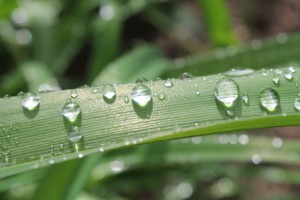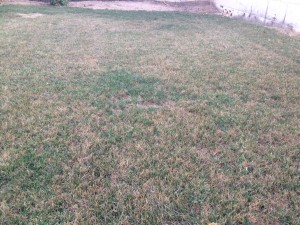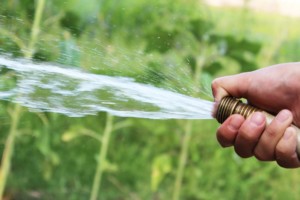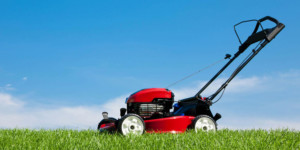Dec
Cooler Turf for Hotter Climates
In hot desert climates, many people look for ways to find water-saving methods with their lawns and sporting fields. One seemingly wise remedy that is by using artificial turf. On its face, this seems like a good solution. However, there are several major reasons why natural turf is still king.
Chief among these reasons is the temperatures artificial turf can reach in hot weather. In warmer months, artificial turf can reach 200º – no, that’s not a typo. That temperature is so much higher than the 122º that’s considered safe for use by professional athletes, much less your family and pets. This temperature of turf is such that you couldn’t put your bare feet or hands on it for longer than a few seconds before it would burn you. This means that during summer months, artificial turf simply is not suitable for play during daytime hours. So one might ask, are its water-saving benefits worth the cost of installation if it is unusable during the daytime for several months out of the year. One way to cool down the artificial turf, users say, is to hose it down and it is suggested to do so every thirty minutes in order for it to stay cool enough to safely play on. However, this practice when used on turf installed specifically to conserve water, defeats its own purpose (while creating humidity in the attempt to cool the artificial turf down).
In addition, using artificial turf has other consequences, some unintended. One is a phenomenon called the urban heat island effect. This means that the artificial turf, similar to concrete and asphalt, actually radiates heat back into the night air, causing warmer nights for the areas that have it and causing nearby plants and grass to need extra water.
At West Coast Turf, we are experts in natural grass, specifically Arizona sod (and you Arizonans know better than anyone how hot the summer months can be!) and have provided the natural turf for many professional fields, including MLB, NFL, professional training fields, college football and baseball fields, racetracks, Major League Soccer, and more. Contact us to find out more about why we’re the best in our field and what we can do for you!
https://www.westcoastturf.com/
Comments Off on Cooler Turf for Hotter ClimatesJun
Arizona Sod Summer Watering Tips
1. The grass doesn’t spring back up after you step on it.
Apr
Arizona & California Sod – Managing Pet Urine
Pets are as much a part of our families as our kids and keeping them happy is important.
Do you know what makes for a happy dog? One of the best ways is by putting in a new lawn. Did you know that putting in grass has been shown to reduce ground temperatures by as much as 30 degrees? We continually see a trend for people to use rocks in their yards because they don’t like the perceived maintenance of a yard but in this day and age it is important to think about the environment.
Sod cleans the air and helps recharge our groundwater supplies. Turfgrass is one of nature’s finest and least expensive filters, and works to improve the environment. The front lawn of just 8 homes has the cooling effect of 70 tons of air conditioning. Just think how happy you and your pets would be to walk around during the summer months if everyone had grass in their yard.
Comments Off on Arizona & California Sod – Managing Pet UrineApr
Arizona Sod Mower Maintenance
While technically the calendar says spring, it feels like summer here in the valley of the sun. As we go through the transition period in California and Arizona from ryegrass back to bermudagrass or paspalum I want to touch a little bit on getting your mower ready for the season. It’s always a good idea to start each season off with a clean, sharp, and ready to use mower. There is nothing worse than going out to cut your lawn and pulling on the lawn mower cord a dozen times only to find the mower won’t turn over. There are some simple things you can do to keep it running well and last for several years.
Before I go into maintenance of your mower I will touch on the two different types of mowers on the market. You can choose between a rotary mower and a reel mower. The reel mowers I will refer to will be self-propelled mowers instead of push reel mowers. The reason I’m skipping on the push reel mowers is because it’s tough to push through thick bermudagrass during the summer months. While it can definitely be done, its just not my favorite thing to do on a 115-degree Arizona day.
There are several brands of reel mowers on the market so deciding which one to buy is going through the various options and deciding what is most important to you. Some of these choices include desired height of cut, number of reels on the mower (the mower reels, the tighter you can mow), weight of the mower, cutting width, and deciding if you will be collecting clippings or letting them lay on the ground. Most of the new reel mowers have a front bucket attachment but there are still a few on the market that drop clippings out the back of the mower.
Comments Off on Arizona Sod Mower MaintenanceApr
Arizona Sod Care
Be careful not to put your fertilizer out at full rate yet, as that will allow the rye grass to grow. You want to use your complete fertilizer at half rate until about June when the bermudagrass is at the height of its growth.
When you are ready to transition your Arizona lawn from winter to summer grass, West Coast Turf can help you! We are the leading experts in Arizona sod and can answer any of your questions. Call us at (888) 893-TURF or visit us at www.westcoastturf.com.
Dec
Sod Lawn Care Tip: Winter Watering Schedule
Preparing your Lawn for Winter

Winter in California and Arizona is definitely unique. For many lucky residents in these states winter still means sunny days and lush green lawns. However, as the weather gradually begins cooling down, it’s time to start preparing your California and Arizona lawns for the cooler weather. This preparation is especially important when it comes to watering your lawn. To help, our Arizona sod experts have provided some winter watering tips to keep your lawn green while also being water wise. Read the rest of this entry »
Comments Off on Sod Lawn Care Tip: Winter Watering ScheduleNov
You Have Overseeded Your California or Arizona Sod Lawn–Now What? And….Even if You Haven’t.
By now most of you who are going to overseed have either begun the process or have had your seed down for a few weeks. Today I want to discuss what to do now that you have the ryegrass growing and cooler temperatures are on the horizon.
Getting your ryegrass up and growing is obviously the first step to a successful winter lawn but what about maintenance? How can you make sure your ryegrass is strong going into the winter and you will have a full stand of ryegrass once the temperatures begin to drop into the 40’s at night? There are several key items associated with a strong winter lawn but early preparation should be high on your list.
Comments Off on You Have Overseeded Your California or Arizona Sod Lawn–Now What? And….Even if You Haven’t.Aug
Signs your Lawn is Drought Stressed
Heat Stress or Drought Stress?

There are two general environmental stresses that can affect lawns during the summer: heat stress and drought stress. Depending on conditions, your turfgrass could have one, the other or both at the same time. Understanding the difference between the two, what they look like and how to respond to them accordingly will help you prevent the potential long-term damage that they cause. We will mainly focus on dealing with a drought stressed lawn, however our turf experts want to provide you with an understanding of both. Read the rest of this entry »
Comments Off on Signs your Lawn is Drought StressedAug
Summer Watering Tips for a Healthy Lawn
Save time and Money with Proper Summer Watering

Did you know: more lawns are killed each summer from over-watering than under-watering? Unlike people, your turfgrass doesn’t need 8 glasses of water a day. Even if it’s upwards of one hundred degrees outside. How often your lawn needs water depends on various factors such as soil type, amount of sunlight, grass type and regional climate. However, on average, most lawns need an inch to an inch and a half of water per week to stay lush and green. Before you set your lawn’s summer watering scheduling, read through these tips provided by our California and Arizona sod experts. Read the rest of this entry »
Comments Off on Summer Watering Tips for a Healthy LawnMay
Summer Lawn Preparation

Is your Lawn Ready for Summer?
Now that the clouds of winter have parted and Spring has arrived, it’s time to start preparing your lawn for the imminent heat of summer. If you haven’t already started your seasonal spring cleaning, then your lawn is the best place to start. The secret to keeping your lawn lush and green throughout the summer lies in the lawn care techniques you implement now.
Don’t risk the chance of sparse, unhealthy and patchy grass by not taking the simple steps needed to transition your lawn for the summer. Instead take the time to cultivate a resilient lawn that can withstand the effects of the sun and heavy foot traffic by following these steps. Read the rest of this entry »
Comments Off on Summer Lawn Preparation



